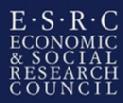Prenatal and Family Precursors of Bullying Involvement in Childhood and their Consequences into Early Adulthood
Research Questions & Publications
Parenting & Bullying: A Meta-Analysis
Prenatal Mental Health & Bullying
Bullying & Psychotic Experiences
Adult Psychiatric Outcomes of Bullying
ESRC Secondary Data Analysis Initiative Event
Intervening in Primary Care against Bullying
Welcome to the Precursors and Consequences of Bullying Study Blog
The University of Warwick has been awarded an ESRC (Economic and Social Research Council) grant to research the precursors and consequences of bullying.

Involvement in peer bullying has been found to be associated with a range of adverse outcomes in childhood including academic problems, physical and mental health problems, and suicidal ideations and attempts. However, little is known about the long term consequences of bullying. One aim of our research is to investigate how experiences of bullying, as early as primary school, affect long term psychological, social functionning and wealth accumulation of people.
While peer bullying has been recognised as a significant and high profile public health problem by some in North European countries and the USA, it is often still viewed as "a normal part of growing up". Recently, the Center of Disease Control published a compendium on measures of bullying behaviour and President Obama and the First Lady organised a conference on Bullying Prevention in March 2011 at the White House.The goal of the conference was to eliminate the myth that bullying is just a harmless rite of passage or an inevitable part of growing up.1
You can watch a short TED talk "When peers mess you up" by Dieter Wolke to learn more about bullying.
It is important to distinguish between normal conflict between two or more children of the same strength such as friends and bullying which is intentional harm doing by one of several others who are stronger than the victim. Our research is interested to understand the factors that increase the risk of children becoming involved in bullying behaviour at school in order to develop prevention or intervention programs that go beyond the school context.
By studying the precursors and consequences of peer bullying, we get a better understanding of what kind of prevention and intervention programs can be implemented.
This study is based on 3 different longitudinal data sets: 1) Avon Longitudinal Study of Parents and Children (ALSPAC), 2) UK Household Longitudinal Study (UKHLS), 3) Great Smokey Mountain Study (GSMS). By investigating three different longitudinal data sets, we hope to learn more about the precursors of being bullied (possible precursors include: prenatal maternal mental health, parenting, domestic violence) and outcomes of being bullied (such as self-harm, susceptibility to health problems and wealth creation).
The Precursors and Consequences of Bullying Study started in November 2012.
Meet the Precursors and Consequences of Bullying Study Research Team
 Hi, my name is Dieter Wolke. I am Professor of Developmental Psychology and Individual Differences at the University of Warwick Department of Psychology and also affiliated with Warwick Medical School, Division of Mental Health and Wellbeing. I head the Lifespan Helath and Wellbeing Research Stream in Psychology and I am the principal investigator of our study on precursors and consequences of peer bullying. My major field of research is to understand why and how some children develop psychological problems and others are protected or resilient to adverse influences. In the last 25 years I have investigated a range of risk factors for psychopathology and we are now able to look at the long lasting effects into adulthood. To investigate the impact of prenatal, perinatal (e.g. preterm birth), early childhood individual differences (e.g. regulator problems such as crying, sleeping or feeding problems), parenting and peer influences, I am leading, co-leading or work on several projects with a number of large longitudinal studies. These include the Bavarian Longitudinal Study, Understanding Society (UK Household Panel Study), EPICure, ALSPAC, Millennium Cohort and the Great Smokey Mountain Study.
Hi, my name is Dieter Wolke. I am Professor of Developmental Psychology and Individual Differences at the University of Warwick Department of Psychology and also affiliated with Warwick Medical School, Division of Mental Health and Wellbeing. I head the Lifespan Helath and Wellbeing Research Stream in Psychology and I am the principal investigator of our study on precursors and consequences of peer bullying. My major field of research is to understand why and how some children develop psychological problems and others are protected or resilient to adverse influences. In the last 25 years I have investigated a range of risk factors for psychopathology and we are now able to look at the long lasting effects into adulthood. To investigate the impact of prenatal, perinatal (e.g. preterm birth), early childhood individual differences (e.g. regulator problems such as crying, sleeping or feeding problems), parenting and peer influences, I am leading, co-leading or work on several projects with a number of large longitudinal studies. These include the Bavarian Longitudinal Study, Understanding Society (UK Household Panel Study), EPICure, ALSPAC, Millennium Cohort and the Great Smokey Mountain Study.
I am very excited about this SDAI project as it enables us to investigate the long term effects of peer bullying (which are substantial) to to identify precursors as early as in pregnancy. The findings will help us to suggest potential interventions and timing of potential measures to prevent bullying or the adverse effects.

I’m Ngianga-Bakwin Kandala. I am currently a Principal Research Fellow in Health Technology Assessment and have a joint appointment with the University of Oxford (KEMRI-Oxford Collaborative Programme) and the University of Warwick, Warwick Medical School, Division of Health Sciences, Population and Evidence Group. I hold an honorary Associate Professor position at Division of Epidemiology and Biostatistics, School of Public Health, University of Witwatersrand, Johannesburg, South Africa. I obtained my PhD in Economics/Statistics from the University of Munich (LMU) in Germany in 2001. For the past 15 years, my main research interests are in Bayesian statistical methods and their application to epidemiology and health. In particular, modelling and estimating the impact of the location on health indicators in Sub-Saharan Africa (SSA), using large scale household data and the analysis of longitudinal data. I have been the PI on grants from ESRC, British Council and NIHR.
I have published widely in high impact peer review journals in both the field of Statistics and health in diverse populations. I have just published a book with Springer on Advance Techniques in modelling Maternal and child health in Africa. My current research interests include, statistical methods applied to epidemiology, survival analysis meta-analysis, Bayesian Analysis and Health Technology Assessment.

I’m Bill Copeland and I am an Associate Professor at Duke University Medical Center in the Center for Developmental Epidemiology. My career has traveled from my start in clinical psychology to a postdoc in psychiatric epidemiology to my current work in genetics and developmental psychopathology. Through it all, I have been focused on why children exposed to similar adversities differ in terms of their short and long-term functioning. Early on, my focus was on the effects of stress and coping on emotional functioning, but this has broadened of late to include the ways in which early adversities get under the skin and affect different biological systems include HPA, immune and inflammation markers. I have been fortunate to work on a number of biologically-informative longitudinal, prospective studies that allow us to test and develop complex models of risk and resilience across development. I have been the PI on grants from NIMH and the Brain & Behavior Research Foundation while publishing first-author publications in the Archives of General Psychiatry, the American Journal of Psychiatry, Biological Psychiatry, JAMA Psychiatry and Neuropsychopharmacology. Outside of work, I can typically be found running or cycling around the woods of North Carolina.
 My name is Suzet Tanya Lereya and I am a Research Fellow at the University of Warwick, working on the Precursors and Consequences of Bullying Study. I have recently been awarded my PhD in psychology (April 2013), from University of Warwick, which focuses on involvement in bullying and family relationships. My undergraduate degree was in psychology, obtained from Koc University in Istanbul, Turkey. I later went on to complete a Masters in Child, Adolescent and Family Mental Health at London Metropolitan University. The main focus of my PhD project was investigating the effects of family environment on peer victimisation. My current research interests include the consequences of peer victimisation such as depression, self-harm and suicide.
My name is Suzet Tanya Lereya and I am a Research Fellow at the University of Warwick, working on the Precursors and Consequences of Bullying Study. I have recently been awarded my PhD in psychology (April 2013), from University of Warwick, which focuses on involvement in bullying and family relationships. My undergraduate degree was in psychology, obtained from Koc University in Istanbul, Turkey. I later went on to complete a Masters in Child, Adolescent and Family Mental Health at London Metropolitan University. The main focus of my PhD project was investigating the effects of family environment on peer victimisation. My current research interests include the consequences of peer victimisation such as depression, self-harm and suicide.

I’m Cath Winsper. I’m a research associate working at the mental health and wellbeing and the psychology departments at Warwick University. My main area of interest is developmental psychopathology: studying how disorders develop over time in response to various risk factors. My Doctoral thesis, using the ALSPAC data resource, explored the precursors of Borderline Personality Disorder symptoms in early adolescence. I am also interested in the consequences of exposure to bullying, including suicidal and self-harm behaviours and mental disorders. More recently, I have been working on a series of projects regarding aggressive and violent behaviour during psychosis. By applying a developmental approach to the aetiology of violent behaviour we may gain a better understanding of the drivers of aggressive behaviour during psychosis.
 My name is Neil Tippett and I am currently studying for my PhD at the University of Warwick. For my doctoral research I am using data from Understanding Society to explore social, cultural and environmental factors associated with school bullying. So far my research has examined whether rates of bullying differ between ethnic groups, identified the association between school bullying and socioeconomic status, and explored the relationship between sibling aggression and school bullying. Before starting my PhD, I spent several years employed as a research assistant, working on a range of projects which included evaluating anti-bullying interventions and assessing government performance in response to identity based-bullying. I also had the opportunity to study cyberbullying, both in the UK and South Korea, and this led me to develop an interest in how children use technology, and the impact that it has on their everyday lives. Outside of work I enjoy surfing whenever I get the chance, and am an avid watcher of sport, no matter what kind.
My name is Neil Tippett and I am currently studying for my PhD at the University of Warwick. For my doctoral research I am using data from Understanding Society to explore social, cultural and environmental factors associated with school bullying. So far my research has examined whether rates of bullying differ between ethnic groups, identified the association between school bullying and socioeconomic status, and explored the relationship between sibling aggression and school bullying. Before starting my PhD, I spent several years employed as a research assistant, working on a range of projects which included evaluating anti-bullying interventions and assessing government performance in response to identity based-bullying. I also had the opportunity to study cyberbullying, both in the UK and South Korea, and this led me to develop an interest in how children use technology, and the impact that it has on their everyday lives. Outside of work I enjoy surfing whenever I get the chance, and am an avid watcher of sport, no matter what kind.
Research Questions and Publications for the Precursors and Consequences of Bullying Study
This study aims to identify both precursors and consequences of involvement in bullying behaviour. To do this we used 3 longitudinal data sets and tried to answer the following 6 research questions:
1) Is there an association between negative family environment and bullying involvement as a victim or a bully/victim?
2) Does stress in pregnancy increase the risk of peer victimisation at primary school?
3) Are there differences in bullying involvement according to ethnicity in a UK wide sample of adolescents?
4) Is being bullied associated with self-harm?
5) Is being bullied associated with psychotic experiences?
6) What are the adult psychiatric outcomes of bullying and being bullied by peers in childhood and adolescence?
Question 1: Is there an association between negative family environment and bullying involvement as a victim or a bully/victim?
Research suggests that children’s family experiences before entering school help shape their capacity to adapt and cope at school and have an impact on children’s peer relationships. Hence, it is very important to identify which parent-child interactions are related to an increase in victimisation or protective against victimisation in order to develop intervention programs to prevent or mitigate victimisation in childhood or adolescence. By doing a meta-analysis, we will be able to systematically investigate the type and strength of the association between parenting behaviour on being bullied.
Parenting behavior and the risk of becoming a victim and a bully/victim: A meta-analysis study
We conducted a systematic review of the published literature on parenting behaviour and peer victimisation. Our results showed that both victims and those who both bully and are victims (bully/victims) were more likely to be exposed to negative parenting behaviour including abuse and neglect and maladaptive parenting. Victims were also more likely to have over-protective parents.Protective factors against peer victimisation include good communication of parents with the child, warm and affectionate relationship, parental involvement and support, and parental supervision. Intervention programs against bullying should extend their focus beyond schools to include families and start before children enter school.
Link to the science:
Lereya ST, Samara M, Wolke D. Parenting behavior and the risk of becoming a victim and a bully/victim: A meta-analysis study. Child Abuse & Neglect. Published online April 25 2013
Links to the news:
Over-protected children 'more likely to be bullied'. BBC News, April 26 2013
Youngsters mollycoddled by their parents 'are more likely to be bullied by their peers'. Mail Online, April 26 2013
Spoiled children are most bullied. Daily Express, April 26 2013
Negative parenting linked with kids being bullied. NHS, April 26 2013
Bullying in the Playground – Interview with Raha Mokarrak. BBC Radio 4 – Woman’s Hour, broadcasted on June 4, 2013
Question 2: Does stress in pregnancy increase the risk of peer victimisation at primary school?
The “foetal programming” or “Developmental Origins of Health and Disease (DOHaD)” hypothesis suggests that suboptimal prenatal environment can alter organ structure, function and physiological homoeostasis leading to altered stress reactivity and psychological outcome, in the offspring. Animal research has repeatedly found that prenatal stress has disruptive effects on behavioural and neuromotor development and the stress response of the offspring. Human studies have also shown that children of mothers who experienced stress during pregnancy are at increased risk of anxiety, attention/hyperactivity problems, conduct disorder as well as altered HPA axis function. However, it is not known whether prenatal stress, due to family adversity or maternal anxiety or depression, may alter the vulnerability of the offspring to peer victimisation. Prenatal stress may increase vulnerability directly by altering the child’s stress response (i.e. crying, running away in response to peer aggression) that make them more likely become targets, or the effects may be indirect due to continuation of maternal stress in the postnatal period or the exposure of the child to maternal stress related behaviours such as maladaptive parenting or partner conflict. So by utilising ALSPAC longitudinal data set, we will try to investigate whether pregnancy effects direct, or due to continuation of family adversity and maternal mental health postnatally or mediated via family factors (maladaptive parenting or partner conflict) or child characteristics (temperament)?
Prenatal Family Adversity and Maternal Mental Health and Vulnerability to Peer Victimisation at School
We have looked at the whether prenatal stress increased the risk of peer victimisation at school. By using nearly 9000 children, this research found that mother's report of family adversity during pregnancy (such as financial problems, drug or alcohol use, or crime involvement) significantly increased the risk of the child being a victim of bullying regardless of the reporter. We also found that partner conflict and maladaptive parenting independently increased the risk of peer victimisation. Our results suggest that experiences in pregnancy may affect the developing foetus and increase vulnerability to be victimised by peers. Conflict between parents and their parenting further increase the risk of being victimised by peers at school. We suggest that in order to prevent children from becoming involved in bullying and subsequent health problems, prenatal care and paediatric settings may provide extra support for families living in high adversity or with prenatal mental health problems.
Link to the science:
Lereya ST, Wolke D. Prenatal family adversity and maternal mental health and vulnerability to peer victimisation at school. The Journal of Child Psychology and Psychiatry. Published 2013
Links to the news:
Stressful pregnancy 'could make children easier prey for bullies'. Daily Mail, November 15 2012
Will pregnancy stress make your kid's life hard? NHS, November 19 2012
Question 3: Are there differences in bullying involvement according to ethnicity in a UK wide sample of adolescents?
In order to reduce and limit the negative effects of bullying, research must identify the factors most strongly associated with involvement in bullying behaviour. Ethnicity is one of the key demographic factors that may contribute to involvement in bullying behaviour. Previous literature suggests mixed results with regards to which ethnic backgrounds are more likely to be involved in bullying behaviour. By using UKHLS, we will try to see whether there are any differences in bullying involvement according to ethnicity.
Ethnicity and Bullying Involvement in a National UK Youth Sample
This study investigated ethnic differences in bullying involvement using the UK Household Longitudinal Study. We found that ethnic minority youth were not more likely to be victimised (i.e. African boys and girls were less likely to be victimised compared to same sex White youths). Pakistani and Caribbean girls were more likely to bully others compared to White girls.
Link to the science:
Tippett N, Wolke D, Platt L. Ethnicity and Bullying Involvement in a National UK Youth Sample. Journal of Adolescence.
Question 4: Is being bullied associated with self-harm?
Self-harm is a widespread problem, with a self-reported prevalence of 14 -17% among adolescents and young adults in the USA. Self-harm results in large number of presentations to hospital, is costly, and causes profound suffering to those affected. Typical self-harm behaviours include: cutting, burning or swallowing pills. Self-harm may be used to relieve tension or communicate stress; and in the most extreme cases, may represent acts with suicidal intent. Bullying victimisation has been repeatedly identified as a consequence, as well as precursor, of psychopathologies (such as depression and borderline personality disorder) that are also predictive of self-harm behaviour. Delineating the developmental antecedents of self-harm, and highlighting at risk groups, is important, as single episodes often lead to a repetition of such behaviours, and self-harm is a key predictor of completed suicide. Hence, by using the ALSPAC longitudinal cohort, we will try to see whether the association between being bullied and self-harm will vary according to risk exposures occurring before (child sex, exposure to maladaptive parenting and domestic violence) and during (internalising and externalising behaviour) exposure to bullying?
Being Bullied during Childhood and the Prospective Pathways to Self-harm in Late Adolescence
By using almost 5,000 participants, we found that a total of 16.5% of 16-17 year olds reported self-harm in the previous year. Being bullied at school increased the risk of self-harming behaviour in early adolescence. We also found that being bullied increased the risk of self-harm indirectly via depression. In other words, being bullied increased the risk of depression and being depressed increased the risk of self-harming behaviour. The association between an adverse family environment (exposure to maladaptive parenting and domestic violence) and self-harm was partially mediated by being bullied. Hence, both maladaptive parenting and domestic violence increased the risk of being bullied at school and being bullied at school increased the risk of self-harm. We think that health practitioners evaluating self-harm should be aware that being bullied is an important potential risk factor. Health practitioners should ask about the “bullying syndrome” characterised by a cluster of physical symptoms such as, headaches, backaches, stomach aches and dizziness.
Link to the science:
Lereya ST, Winsper C, Heron J, Lewis G, Gunnell D. Fisher HL, Wolke D. Being Bullied During Childhood and the Prospective Pathways to Self-Harm in Late Adolescence. Journal of the American Academy of Child & Adolescent Psychiatry. Published online April 1 2013
Links to the news:
Childhood Bullying Is Tied to Adolescent Self-harm HealthlineNews, May 31 2013
School Bullying and Later Self-harm Risk The British Psychological Society, May 30 2013
Question 5: Is being bullied associated with psychotic experiences?
In our previous research, we already showed that being bullied is related to psychotic experiences at 12 years of age. The follow-up of bullied children until early adulthood, when the first expression of psychosis is expected, is necessary to clarify the direction and strength of this association. Hence, now, we want to investigate whether this association will stay relevant for psychotic experiences at 18 years of age.
Bullying in elementary school and psychotic experiences at 18 years: a longitudinal, population-based cohort study
By utilising more than 4000 participants, we were able to show that both victims and bullies were at increased risk of suffering from psychotic experiences by the age of 18. Even when external factors such as family relationships, pre-existing behaviour problems, children who were involved in bullying behaviour (as victims and/or bullies) were up to four and a half times more likely to have suffered from psychotic experiences by the age of 18. Hence, bullying should be assessed and monitored by health professionals
and interventions that reduce victimization should be available. Such interventions may human suffering and long-term mental health costs and provide a safer environment for children to grow up in.
Link to the science:
Wolke D, Lereya ST, Fisher HL, Lewis G, Zammit S. Bullying in elementary school and psychotic experiences at 18 years: a longitudinal, population-based cohort study. Psychological Medicine. Published online December 17 2013.
Links to the news:
Bullying BBC News, December 17 2013
Bullied children are more likely to suffer from psychosis by the time they are 18: Pupils picked on at school can suffer serious mental health problems later in life Daily Mail, December 18 2013
Bullied children more likely to hallucinate or hear voices Telegraph, December 18 2013
Question 6: What are the adult psychiatric outcomes of bullying and being bullied by peers in childhood and adolescence?
Increasing evidence now shows that involvement in bullying is associated with a range of adverse outcomes. We found (Copeland et al., 2013) that victims and those who both bully and become victims (bully-victims) are at much increased risk for psychiatric problems and suicidality. The Great Smokey Mountain Study longitudinal study in North Carolina provides an ideal opportunity to investigate the long shadow that bullying may cast on health, wealth, crime involvement and social relationships in adulthood.
Impact of Bullying in Childhood on Adult Health, Wealth, Crime, and Social Outcomes
There are only few studies that looked at the association between bullying and health and social problems in adulthood. By using more than 1,400 people between the ages of nine and 26, this study investigated the long-term outcomes of children involved in bullying behaviour. The results showed that victims of childhood bullying, including those that bullied others (bully-victims), were at increased risk of poor health, wealth, and social-relationship outcomes in adulthood even after controlling for family hardship and childhood psychiatric disorders. On the other hand, pure bullies were not at increased risk of poor outcomes in adulthood once other family and childhood risk factors were taken into account. This study highlights the long-lasting and significant damage that bullying may cause. Interventions for bullying in childhood may reduce the long-term health and social costs.
Link to the science:
Wolke D, Copeland WE, Angold A, Costello EJ. Impact of Bullying in Childhood on Adult Health, Wealth, Crime, and Social Outcomes. Psychological Science. Published online August 19 2013.
Links to the news:
Childhood bullying 'damages adult life' BBC News, August 19 2013
Far from Being Harmless, the Effects of Bullying Last Long Into Adulthood Science Daily, August 19 2013
Far From Being Harmless, the Effects of Bullying Last Long Into Adulthood APS, August 19 2013
Link to the Q&A session:
Q&A With Dieter Wolke Association for Psychological Science
ESRC Secondary Data Analysis Initiative Event
On 6th and 7th of June, Dieter travelled to the British Library in London for an ESRC Secondary Data Analysis Initiative event. This was a chance for the research teams, which were funded by the ESRC, to meet, share ideas and discuss future plans.
Anti-Bullying Week
Anti-bullying week is an annual UK event which aims to raise awareness to bullying and highlight the ways to prevent and respond to it. Anti-Bullying Week is organised by the Anti-Bullying Alliance (ABA) in England and Northern Ireland Anti-Bullying Forum (NIABF) in Northern Ireland.
We have also tried to contribute to this important week.
We have collaborated with IGGY to help children learn about bullying and Dieter has been interviewed about what parents should do if their child is a bully. You can find the interview from the BBC website.
Sibling Rivalry
Dieter has been invited to join Radio 4s ''Bringing Up Britain'" round table discussion on 22nd of December. You can catch it up on BBC iPlayer: Sibling Rivalry!
Sibling Bullying and Risk of Depression, Anxiety, and Self-Harm: A Prospective Cohort Study
Our new article just got published investigating whether being bullied by a sibling is prospectively associated with clinical depression, anxiety, and self-harm in early adulthood. Around 7,000 children aged 12 were asked if they had experienced a sibling saying hurtful things, hitting, ignoring or lying about them and then they were followed up at 18 and asked about their mental health.
Our results showed that:
- Most children had not experienced bullying and of these, at 18, 6.4% had depression scores in the clinically significant range, 9.3% experienced anxiety and 7.6% had self-harmed in the previous year.
- 786 children who said they had been bullied by a sibling several times a week were found to be twice as likely to have depression, self-harm and anxiety as the other children. 12.3% reported depression, 14% reported self-harming, and 16% reported having anxiety symptoms.
- Girls were slightly more likely to be victims of sibling bullying than boys, particularly in families where there were three or more children.
- Having an older brother increased the risk of sibling bullying.
In summary, being bullied by a sibling has long-term negative consequences. More research is needed to investigate the consequences of sibling bullying. And parents should be aware of the negative consequences of bullying at home setting.
Link to the science:
Bowes L, Wolke D, Joinson C, Lereya ST, Lewis G. Sibling Bullying and Risk of Depression, Anxiety, and Self-Harm: A Prospective Cohort Study. Pediatrics. Published online September 8 2014.
Links to the news:
Sibling bullying increases depression risk BBC News, September 8 2014
BBC World News BBC News, September 8 2014
Why we must take sibling bullying seriously The Guardian, September 8 2014
Bullying from brothers and sisters may be harmful Reuters, September 8 2014
Lasting toll of bullying by a sibling Daily Mail, September 8 2014
Intervening in Primary Care against Childhood Bullying
Bullying is increasingly recognised as a major public health concern. It has serious effects on health leading to substantial costs for individuals, their families and society at large. It is important for healthcare professionals, especially GPs (General Health Practitioners), becoming more aware of childhood bullying as a significant risk factor and safeguarding issue.
Preliminary results showed that (interpret with caution as the results are based on small convenience sample):
- 93% felt GPs should be better able to recognise and help young people affected by bullying
- 55% agreed that they would feel comfortable being asked about experiences of being bullied by their GP
Of the parents,
- 86% stated they saw it important that GPs should be better able to recognise bullying
- 81% were positive with regard to asking their child to answer a screening questionnaire in a GP waiting room
Given children’s reluctance to seek help from school, and with affected children experiencing health problems which may lead to increased use of primary care services, there is a persuasive case for greater awareness and responsiveness to childhood bullying among the primary care professionals with whom they come into contact.
Link to the science:
Dale, J., Russell, R., & Wolke, D. Intervening in primary care against childhood bullying: an increasingly pressing public health need. Journal of Royal Society of Medicine. Published online March 18 2014.
Overview
For an overview of our research – watch our podcast: http://www2.warwick.ac.uk/fac/sci/psych/bullying.mp47
Bullying and Parasomnias: A longitudinal cohort study
Over 6500 children from the Avon Longitudinal Study of Parents and Children (ALSPAC) were interviewed at elementary school age (8 and 10 years) about bullying experiences and then about parasomnias at secondary school age (12-13 years).
Our results showed that those that were bullied at age 8 or 10 years were more likely to have nightmares, night terrors, or sleepwalking at age 12 years. Moreover, those who were bullied and bullied others (bully/victims) were most likely to have any parasomnia.
Parents, teachers, school counselors and clinicians may consider asking about bullying experiences if a child is having parasomnias.
Link to the science:
Wolke D & Lereya ST. Bullying and Parasomnias: A Longitudinal Cohort Study. Pediatrics. Published online September 8 2014.
Adult Mental Health Consequences of Peer Bullying and Maltreatment in Childhood: Two Cohorts in Two Countries
The study looked at children in the UK and in the US who were taking part in two major longitudinal pieces of research. In the UK, the 4,026 children involved were part of the Avon Longitudinal Study of Parents and Children (ALSPAC), with the 1,420 in the US recruited to the Great Smoky Mountain Studies (GSMS) research.
The information on maltreatment among children aged from eight weeks to eight years old in the UK came from mothers, who were asked at regular intervals whether the child had been physically or sexually abused and whether the partner had been physically or emotionally cruel. Hitting, shouting and hostile parenting were also recorded as maltreatment. The children themselves were asked whether they had been bullied at the ages of 8, 10 and 13. In the US group, maltreatment and bullying were assessed through regular parent and child interviews from the age of nine to 16. All the children were assessed for anxiety and depression and self-harm or suicidality (at 18 years of age for ALSPAC and 19-25 years of age for GSMS).
The results showed that according to both cohorts, being bullied by peers increased the risk of mental health problems (such as anxiety, depression and self-harm/suicidality). Being maltreated by adults only increased the risk of depression according to GSMS Cohort. Children who were bullied by peers only were more likely than children who were maltreated only to have mental health problems in both cohorts, with differences in anxiety (according to the GSMS cohort), depression and self-harm (according to the ALSPAC cohort).
The study is “a call to the fragmented child protection lobbies to join forces”. It illustrates the growing consensus that children are entitled to grow up free from violence, denigration and non-consented sexual activity at the hands of both adults and young peers.
Link to the science:
Lereya ST, Copeland WE, Costello EJ, Wolke D. Adult Mental Health Consequences of Peer Bullying and Maltreatment in Childhood: Two Cohorts in Two Countries. Lancet Psychiatry. Published online April 28 2015.
Links to the news:
Children bullied by peers ‘at greater mental health risk’ Guardian, April 28 2015
Bullying may have worse long-term effects than child abuse NHS, April 29 2015
Being bullied is 'worse than child neglect or abuse' Daily Mail, April 28 2015
